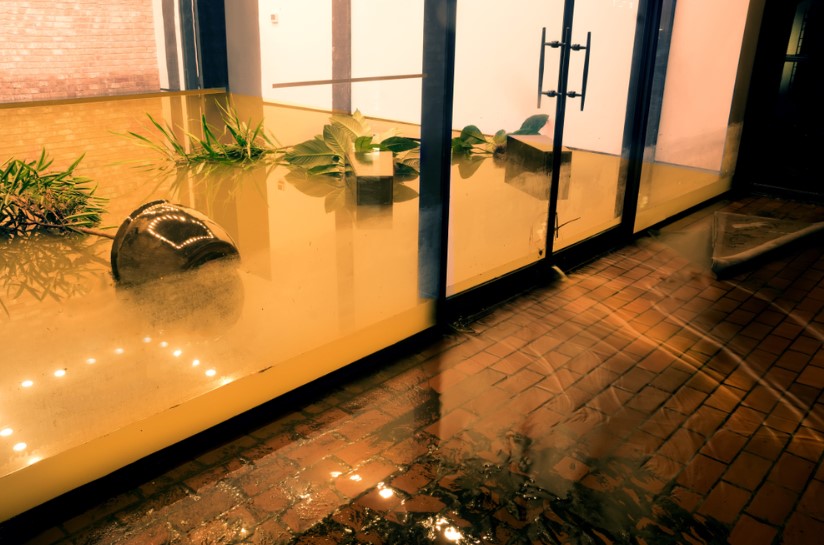
If you’ve suffered from a flood, you can do some basic water damage cleanup in your home, including removing standing water. This article will cover some water damage cleanup techniques to make the process easy as possible. These are important for minimizing damage and restoring your home.
In-place drying
Before beginning the water damage cleanup process, it is essential to stabilize the environment and determine the extent of the damage. Identifying damaged materials is crucial to determining the scope of work and the costs involved. Drying materials can be tricky, especially if they are porous. A damage restoration company will be able to provide you with the best solution for your home. However, you’ll want to inform your restoration company if your power is off.
Several types of water damage, including class 4 – deeply held or bound water, involve significant water absorption. Specialized drying methods are required when the materials and assemblies involved have low evaporation rates and need substantial water vapor pressure differentials. Disruptive drying methods involve removing wet items and forcing air into the area to speed up drying or perforating the affected area to allow water to escape. These methods are a good choice for specific situations, such as when contamination, cost, or customer concerns need to be considered.
Vacuuming
While you may think that removing standing water from your home is easy, it can be pretty tricky. Water that has not dried properly can become infected with bacteria and mold, resulting in severe respiratory illnesses. Vacuuming is not the only way to clean up water damage; it also needs to be part of a thorough water damage cleanup plan. In addition to vacuuming, water damage restoration techniques include a variety of other steps to prevent mold growth and bacteria contamination.
Stain removal
As part of water clean up techniques, stain removal is an essential component. Many stubborn stains require chemical treatment, but stain removal techniques can also be performed with physical methods. In this article, we discuss eight physical stain removal techniques. Ensure your cleaning supplies are non-toxic and non-abrasive. You should also use deionized water to prevent smells.
Pretreating can help remove stubborn stains, such as blood and wax. Pretreating the stained area with an abrasive substance makes the color less likely to stay. Pretreating is also effective for stubborn soils and oily stains. Pretreating involves applying a stain-removing agent directly onto the stained area. These agents include a liquid detergent, soil-and-stain-removing pretreat spray, bar soap, and a paste made from water.
Mold removal
Professional help with mold removal is crucial if your property has recently experienced water damage. It would help if you had a team of mold remediation professionals who know what to do to prevent further damage. You should be proactive in taking care of your property as soon as possible because if you wait, you risk exposing yourself to mold spores and potentially worsening your health. Here’s how to hire the best crew to help you with the water clean up process:
Before you begin the mold removal process, you should first fix any plumbing problems that may have led to the damage. Then, you should thoroughly dry all items so mold will not spread throughout the property. If you have porous materials, you may have to dispose of them as mold can grow on them. And it would help if you kept in mind that mold thrives in empty spaces and can be hard to remove. The problem will get worse if you don’t fix the water source.
Estimating the cost of a water damage restoration project
There are many costs associated with water damage. For example, the affected area may need to be replaced or repainted, or fixtures may need to be repaired. You can determine the cost of repairs by estimating the amount of square footage that needs to be dried out. Water damage in a home can come from many sources, including rain, melting snow, leaking water pipes, and toilets. There are also gray water sources, such as toilet overflows and sump pump failures.
The average water damage restoration cost is around $2,400, but it can reach up to $4,250. The price is also affected by the type of water, building materials, and labor costs in your area. Therefore, you should contact a water damage restoration company as soon as possible to get an accurate quote. A water damage restoration company will have a list of materials and prices for each type of service, which will help you determine an appropriate budget.
Identifying hidden water damage
There are numerous hidden signs of damage when it comes to water leaks. These may range from water spots on walls to thick paint. Water can accumulate behind walls and cause mold to develop. Waterborne pests can also invade your house. Identifying hidden water damage is an essential aspect of the water clean up process. When done quickly, it will save you time and money. Listed below are some ways to identify hidden water damage.
If you’ve experienced a flooding incident, you probably know about the apparent causes of water damage. Burst pipes and overflowing sinks are two common problems. But if you’re unaware of the hidden sources of water damage, you could pay thousands of dollars for repairs. This is especially true for hidden leaks and pipes. While these aren’t immediately visible, they are often the most serious.
